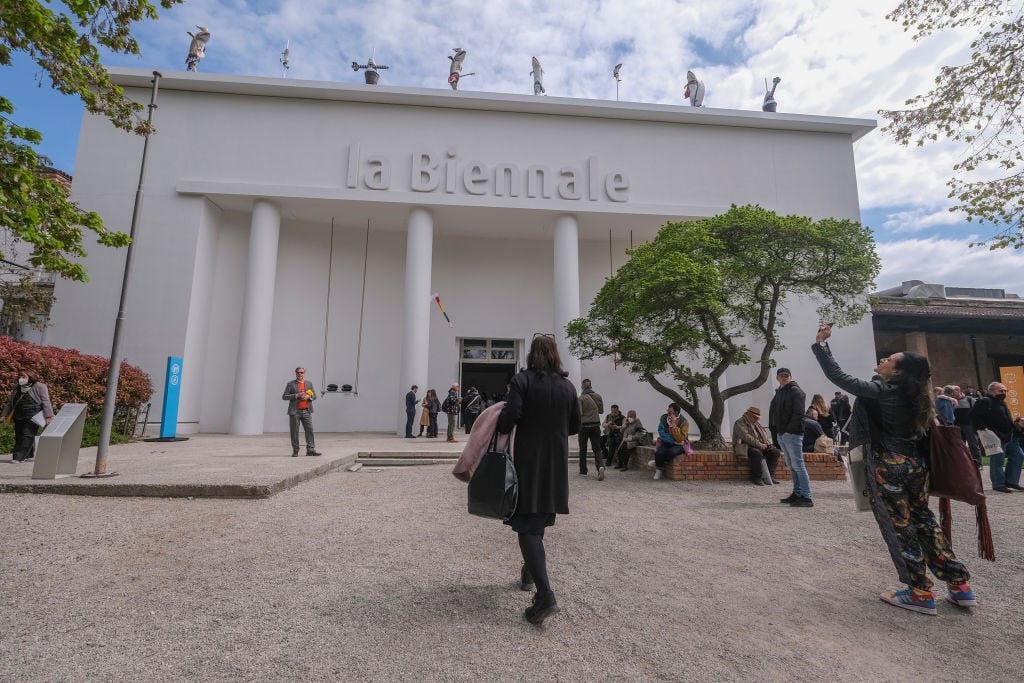Art & Exhibitions
The Venice Biennale Has Announced the Highly Anticipated Curatorial Theme of Its 2024 Art Exhibition
The show's first-ever Latin American curator has revealed the concept of his upcoming edition.

The show's first-ever Latin American curator has revealed the concept of his upcoming edition.

Jo Lawson-Tancred

The curator and artistic director of the 60th Venice Biennale, Adriano Pedrosa, has announced the driving theme of next year’s exhibition. It will explore the notion of the foreigner, and center its focus on those on the margins, namely exiles, émigrés, and outsiders.
The title and theme, “Foreigners Everywhere,” was announced today, June 22, in Venice by Pedrosa. The artistic director of the Museu de Arte de São Paulo hails from Brazil, and is not only the biennale’s first Latin American curator, but, more remarkably, its first to come from the Southern Hemisphere. The mammoth art event in Italy is set to run from April 20 to November 24, 2024.
The concept of the 2024 show has a dual meaning for Pedrosa. The planned theme not only suggests that wherever we go in the world we will encounter those that we perceive to be foreigners, but also that “no matter where you find yourself, you are always truly and deep down inside a foreigner yourself,” according to the curator. He added that artists are no strangers to this feeling.
The title is borrowed from a series of works by the conceptual “collective artist” Claire Fontaine, which was founded in Paris in 2004 by the Italian artist Fulvia Carnevale and the British artist James Thornhill, who are currently based in Palermo, Italy.
Their series Foreigners Everywhere consists of simple neon signs with the slogan written in different languages. In each case, the term carries a strange ambiguity over whether we should read the statement as fact or threat, although it was taken from the name of Stranieri Ovunque (as the phrase translates in Italian), a Turin-based anarchist collective known for its anti-racist activism in the early 2000s.

Tourists and locals enter the Biennale’s Central Pavilion during the 59th International Art Exhibition on April 20, 2022 in Venice, Italy. Photo: Stefano Mazzola/Getty Images
Pedrosa told press that “the backdrop for Claire Fontaine’s work is a world full of multiple crises concerning the movement and existence of people across countries, nations, territories, and borders, which reflect the perils and pitfalls of language, translation, ethnicity [in] expressing differences and disparities conditioned by identity, nationality, race, gender, sexuality, wealth, and freedom.”
For his curated exhibition, Pedrosa promises to focus on artists who are immigrants, expatriates, diasporic, exiled, and refugees, especially those who have moved between the Global South and the Global North. As the Italian translation of “foreigner” as “straniero” shows, however, the word also evokes the idea of a stranger more generally. To this end, the exhibition will also include all manner of marginalized artists, including those that are queer, designated “outsider,” or indigenous and therefore “frequently treated like a foreigner in their own land.”
For many artists, this status of “foreigner” drives the themes or narratives in their work, but Pedrosa was keen to note that other artists “delve into more formal issues with their own foreign accent.” Works that reflect this mode of innovation will appear throughout the exhibition, as will historical 20th century works from underrepresented modernist movements that flourished throughout the Global South. Finally, a spotlight will also be placed on the Italian artistic diaspora that emigrated to Latin America, Asia, Africa, and the Arab world among other places, where they contributed to the development of modernism internationally.
The Venice Biennale is the art world’s biggest international event—there were 80 national pavilions in 2022—and it is always welcoming new exhibitors. The Republic of Benin will participate for the first time at the 60th edition next year.
More Trending Stories: